I have the plot 1
curve(exp(x), from=1, to=5, lwd=5)
curve(150-exp(x), from=1, to=5, lwd=5, col="darkblue",add=T)
and inside it i would like to add the following plot 2
par(mar=c(7,7,1,1))
curve(exp(x), from=1, to=5, lwd=7, xlab="chi", ylab="exp(x)", cex.lab=4,axes=F)
axis(1, labels=NA,at=c(0,5))
axis(2, labels=NA,at=c(0,150))
text(1,120,"Alpha",adj=c(0,0),cex=3)
text(3.5,10,"Beta",adj=c(0,0),cex=3)
In order to obtain the following

I would also like to make plot 2 transparent so that if there are some elements of plot 1 behind plot 2 they will still show (just like the blue line). Also important are the bigger labels of plot 2 and the absence of labels and ticks in it's axes.
Is this possible? Please only base R solutions (no ggplot2 / no lattice)

